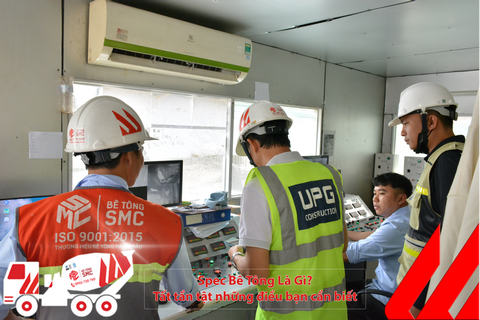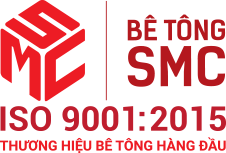Frequently asked Questions
Concrete engineering advice
Business contact
Choosing the Right Concrete Power Trowel for Your Project
Choosing the right concrete power trowel is crucial during construction, and the SMC brand is a reliable partner in the production and trading of ready-mixed concrete. This article will guide you on how to choose the right SMC concrete power trowel for your project, considering factors such as power, size, durability, and flexibility.1. Overview of Concrete Power Trowels Today
In today's digital age, machinery has developed remarkably, serving various industries such as construction, healthcare, education, and transportation. In this article, we will explore concrete power trowels and their importance to construction workers on-site.1.1. What is a Concrete Power Trowel?
A concrete power trowel is an extremely useful tool in the construction industry. With the ability to make concrete surfaces more solid and smooth, concrete power trowels have become an indispensable part of construction projects such as condominiums, schools, workshops, villas, and many others.Concrete power trowels offer many important benefits. Firstly, they significantly enhance the aesthetics of concrete surfaces, producing high-quality finished results. This not only creates highlights in terms of beauty but also increases work productivity by tenfold compared to manual work using traditional smoothing tools. Additionally, using power trowels saves labor and reduces the experience requirements from workers.
However, it's worth noting that concrete power trowels have a high cost, so they are usually only applied in professional construction enterprises. Using these support machines also increases efficiency and reduces labor compared to traditional manual work, requiring less experience from workers.
With these advantages, the power trowel is an important tool for achieving quality and speedy concrete surfaces in construction projects.
In the structure part of the concrete power trowel, construction workers will be very interested as this will be the standard for deciding whether to purchase this product or not.
Corresponding to the image of the concrete power trowel, the product is made up of easily recognizable main parts such as the trowel disc, engine, trowel blade, and handle.
Trowel Blade: This is the part that directly contacts the concrete surface at construction sites. It is responsible for smoothing and leveling the concrete surface. Trowel blades are made from high-quality materials such as carbon steel or stainless steel, which resist wear and tear and respond to pressure and friction when working on the surface.
When the concrete power trowel is in operation, the trowel blade will rotate rapidly and move across the concrete surface, creating a smoothing and compacting effect. The rotation and friction of the trowel blade help shape the concrete surface, eliminating cracks and uneven surfaces while providing the desired gloss and smoothness.
Engine: The engines of concrete power trowels nowadays are designed to provide power and efficiency during operation. Most concrete power trowels use gasoline engines or electric motors. Gasoline engines are typically used for outdoor applications or when there is no readily available power source. Electric motors are commonly used in indoor construction or locations with easy access to power.
In the engine part, we will focus on the following specifications: power, rotation speed, fuel type, noise level, etc., to evaluate which type of machine is suitable for our needs.
Trowel Disc: The concrete trowel blade is usually attached to the trowel disc, not wrapped around it. The trowel disc is designed to ensure safety for the machine operator. It can be equipped with protective parts such as warning rings or protective covers to prevent accidents and direct contact with the trowel blade.
Handle: The part that contacts the machine operator's hand helps them control the concrete power trowel flexibly and easily.
To classify concrete power trowels in an understandable and detailed way, we can use the following criteria:
Structure:
- Single Concrete Power Trowel: This type of machine has a simple structure, consisting of a trowel frame and handle for the operator to adjust and control the machine in various directions. This type of machine allows users flexibility during work.
- Double Concrete Power Trowel: This type of machine has a structure consisting of two trowel cages, usually mounted side by side. This machine has a steel trowel blade design, making it easier to level and smooth concrete surfaces.
Engine:
- Concrete Power Trowel with Robin Engine: Uses a Robin engine, a popular brand in the industry. Robin engines are known for their high durability and stable performance.
- Handheld Concrete Power Trowel with GX160 Engine: This type of concrete power trowel uses a GX160 engine. The GX160 engine is a popular type widely used in many industrial applications.
Based on the structure and engine classification, SMC Concrete believes this will be the basis for you to choose the machine that suits your project.
1.4. The Function of Concrete Power Trowels
As mentioned above, the function of the product mainly focuses on leveling, filling, and smoothing surfaces.Leveling concrete surfaces: Used to level concrete surfaces after the pouring or leveling of concrete. By moving the machine across the concrete surface, the trowel blade of the machine will remove unwanted cracks, bumps, or grooves on the surface, creating a flat and smooth surface.
Enhancing aesthetics: Improves the aesthetics of concrete surfaces. When used correctly, concrete power trowels can create a smooth, uniform, and attractive shiny surface. This is especially important for projects such as house floors, workshop floors, concrete yards, tennis courts, where aesthetics play a crucial role.
Saving labor and construction time: Helps save labor and increase construction efficiency. Instead of using multiple workers to manually smooth concrete surfaces, only one person is needed to operate the machine. This helps reduce labor and time, as well as increase productivity and construction progress.
2. Why Should You Rent Concrete Power Trowels for Your Projects?
Renting concrete power trowels brings many benefits, including cost savings, high efficiency, high quality, flexibility, and convenience, along with professional expertise and technical support from reputable suppliers.3. Experience in Renting Concrete Power Trowels You Need to Know
When renting concrete power trowels, choose a reliable supplier, carefully read the contract, check the status and operation of the machine, adhere to safety regulations, and report any machine-related issues. These experiences will ensure a successful and safe rental process.In practice, renting concrete power trowels for construction projects brings significant benefits. By saving costs, achieving high efficiency and quality, flexibility and convenience, along with professional and technical support, renting handheld concrete power trowels becomes a smart choice for construction contractors and project owners.
However, to ensure success in the rental process, SMC Concrete advises choosing a reliable supplier, adhering to safety regulations, and conducting thorough checks before using the machine. With these experiences, renting concrete power trowels will bring efficiency and cost savings to your construction project.
Other news
Currently, ready-mix concrete is a top choice for many construction projects—both large and small—thanks to its convenience, consistent quality, and high construction efficiency. With extensive experience supplying commercial concrete for numerous key projects in the Southern region, SMC proudly offers a diverse range of ready-mix concrete products to meet the technical requirements of every type of construction.
A Comprehensive Guide to Concrete Specs – Everything You Need to Know
A Complete Guide to Concrete Specs – a set of technical parameters including concrete grade, slump, compressive strength, aggregate size, and mix ratio. This article helps you understand how to define, apply, and control concrete quality according to TCVN standards and practical construction conditions.
How to check the concrete slump
In construction and civil engineering, concrete slump test (or simple slump test) is the work performed at the construction site or in the laboratory that usually determines and measures the hardness, consistency of samples. Concrete before pouring concrete or casting maintenance, research or experiment samples.




